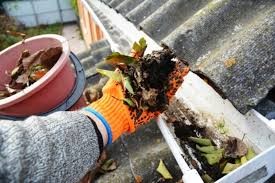Mould is a major inconvenience, and can actually be dangerous to a tenant’s health, if left untended. In this blog post we will be discussing the different methods, and precautions you can take in order to prevent mould growth in your home. Whilst it is important to learn how to get rid of existing mould, it is just as important to understand how to prevent it from occurring in the first place.
Below we will list 5 tips that will help you to prevent mould growth from occurring in your property.
1.) Keep your property dry!
Moisture can be a nuisance, as it makes its way into properties very easily given the right conditions. Finding a way to eliminate moisture is a key step in the prevention of mould growth. It is important to check areas that could frequently collect water or have a build-up of condensation. Windows, fridges and crawl spaces are all popular places for water to build up, and it is in these environments that mould will start to form. It is therefore vital, that you take all measures possible to quickly dry any moisture in areas like these, and perform the proper maintenance, so that no further moisture is allowed to settle.
2.) Ensure your home is properly ventilated.

Proper ventilation of your property is also a key factor in preventing mould growth. Ventilation works to prevent humidity from gathering in the air and getting trapped in an indoor space. If left unventilated, the space will simply build up with moisture, will in turn lead to widespread mould growth. Having good airflow in essential in cutting back on the moisture level, and it will help to dry the affected areas more quickly. You can optimise the ventilation by ensuring all vents are unobstructed, as this will ensure that the air is circulating efficiently, therefore further helping to keep the spaces dry.
3.) Keep a close eye on your home’s humidity levels.
Mould thrives in areas of high humidity. Because humidity often causes condensation, moisture is able to settle in your property, and the dampness will take much longer to dry out, because of the wet air. If the air inside your home, is suddenly exposed to rainy and/or excessively humid conditions, there is the potential for increased mould growth. Keep an eye on moisture building up around windows, or on walls and wipe down with an absorbent cloth to prevent mould from occurring.
4.) Dehumidifying with Positive Input Ventilation Units (PIV’s)
Condensation is a major player in the formation of mould growth, it is therefore important to also treat and prevent this from occurring.
The key component to condensation in the air, is excess moisture, and so it makes sense to remove as much of it as possible in order to manage the build-up of condensation. A great way to do this is to use a positive input ventilation system, which is an energy efficient method of displacing stale contaminated air and replacing it with fresh filtered air. Fresh air is drawn from outside via the loft space through a filter on the unit and delivered into a central location in your home.
This displaces vapor-laden air, which lowers humidity levels, cures condensation and eradicates mould. The unit runs continuously except when the loft temperature rises above 25°C, when the unit will switch off. When the air temperature falls below 25°C, the unit will switch back on. For more information on these systems, see our shop page at: https://l-a-b-s.co.uk/product/positive-air-vents-heat-recovery-units/
5.) Clean or repair of roof guttering
Mould problems can occur as a simple matter of a fault roof, whereby water is allowed to ingress, as a result of full or damaged gutters. It is good practice to have your gutters regularly cleaned, and inspected for damage, so that any issues can be fixed, before they become a larger issue (This is a service we can provide at LABS.) Once necessary repairs and maintenance have been carried out, it is important to keep a close look out for any water stains, that may indicate a leak.



